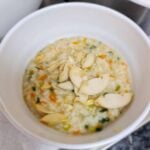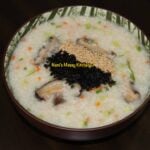Abalone porridge (jeonbokjuk) is known as the “king of porridges” in Korea. Not only is it creamy, savory, delicious, hearty, and satisfying, but because they live on the rocks on the bottom of the ocean, abalones are incredibly lean and have almost no fat. They are full of good minerals and vitamins, too. It’s hard to beat abalone porridge for taste, nutrition, and making you feel warm and satisfied.
When I lived in Korea, abalones were so expensive that most people couldn’t afford them, and we rarely ate jeonbokjuk. I traveled to the southern part of Korea late last year and I found fresh, live, wild caught abalones in the local seafood markets of Yeosu and Namhae. They were still expensive but I really wanted to taste them, so I bought some and made jeonbokjuk.
The flesh of fresh, wild caught jeonbok is surprisingly hard, but gets a lot softer and chewier after they are cooked. The porridge I made from these abalones was infused with their savory flavor, and it was incredibly delicious.
Of course I immediately thought of my readers and the jeonbokjuk video I made in 2009 when I first started my YouTube channel, which was filmed using frozen abalone. The difference in taste between frozen and fresh abalone is so huge, I decided to remake this video for the King of Porridges, using the best quality ingredients I could find!
I had my chef’s knife with me in Korea, and my cutting board, and some ingredients, but I didn’t have a good, clean kitchen brush to clean the abalones with so I ended up using salt and a clean sponge. I also modified my old jeonbokjuk recipe to make it less salty, and you can change this recipe to your taste if you want: add more or less fish sauce, kosher salt, toasted sesame oil, or water.
Even if you can’t get fresh, wild caught abalones, you can still use frozen abalones from a Korean grocery store, or replace abalone with mussels, clams, shrimp, or even ground beef. Whichever way you make jeonbokjuk, this porridge makes a great meal for yourself, someone you love, or someone who is recovering from an illness who can use the nutrients of abalone in a form that is soothing and gentle on the stomach.
Enjoy your abalone porridge! I feel like some right now!
Ingredients (for 2 or 3 servings)
- 2 fresh medium sized abalones (or 4 to 5 ounces of frozen abalone)
- 1 cup rice, rinsed and soaked in cold water for 1 hour
- 2 teaspoons toasted sesame oil
- 2 garlic cloves, minced
- 5-6 cups of water
- ⅓ cup chopped carrot
- 2 to 3 chopped green onions
- 1 teaspoon fish sauce
- 1 teaspoon kosher salt
- eggs (optional)
- 1 sheet of gim (seaweed paper), toasted, and crushed
Directions
Clean abalones
- Scrub the tops and sides of the abalone with a clean kitchen brush or sponge and salt.

- Cut off the tip.

- If they are still in the shells, gently and firmly pry them out with a spoon. Remove the intestines, too.

- Wash and scrub the meat and intestines in clean running water.


Make porridge
- Strain the rice.
- Heat a thick-bottomed pot over medium hight heat. Add the sesame oil and garlic and stir with a wooden spoon for 10 to 20 seconds. Add the abalone intestines if you have it, and keep stirring until well combined.

- Add the rice and stir with the wooden spoon for one minute until the rice turns a little translucent.
- Add the chopped abalone and 5 cups of water. Stir and cover. Let cook over medium high heat for 10 minutes.

- Add carrot and green onions. Lower the heat and cook for another 10 minutes.

- If you like your porridge a bit more soupy, you can add one more cup of water and let it cook for a few more minutes over low heat.
- Add fish sauce and salt and stir it well.

Optional poached eggs
- If you want a poached egg or 2, crack the eggs into the porridge. Gently stir the bottom of the pot with the wooden spoon so it doesn’t get burnt. Cover, turn up the heat a bit, and cook for another minute or two.
Serve
- Toast a sheet of seaweed (gim) and put it in a plastic bag. Rub the sides of the bag together to crush the gim and create gimgaru (crushed seaweed flakes).
- To serve, ladle servings of porridge into bowls and sprinkle a bit of gimgaru over each one just before eating. Serve with kimchi and a few more side dishes if you have them, or just by itself.
Maangchi's Amazon picks for this recipe
It's always best to buy Korean items at your local Korean grocery store, but I know that's not always possible so I chose these products on Amazon that are good quality. See more about how these items were chosen.




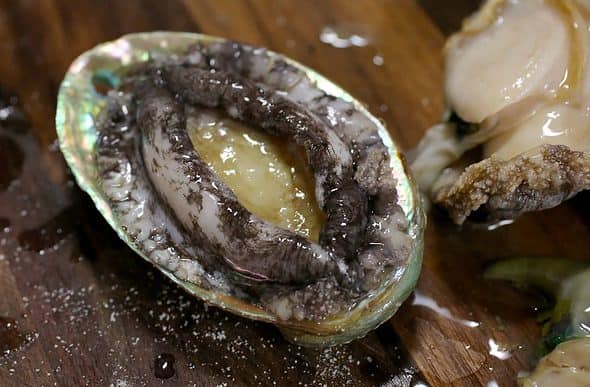
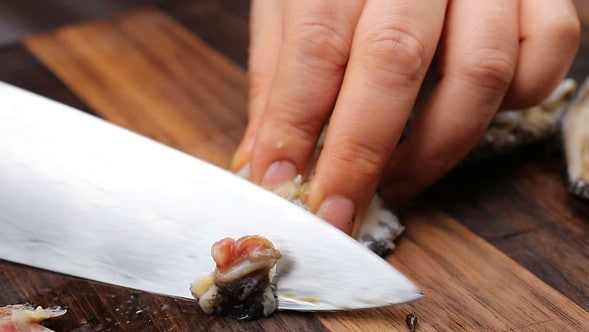
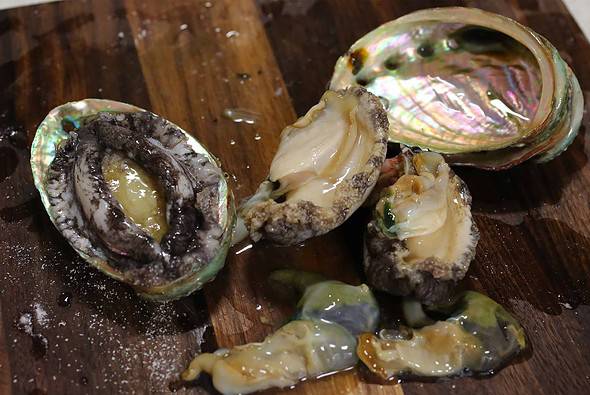
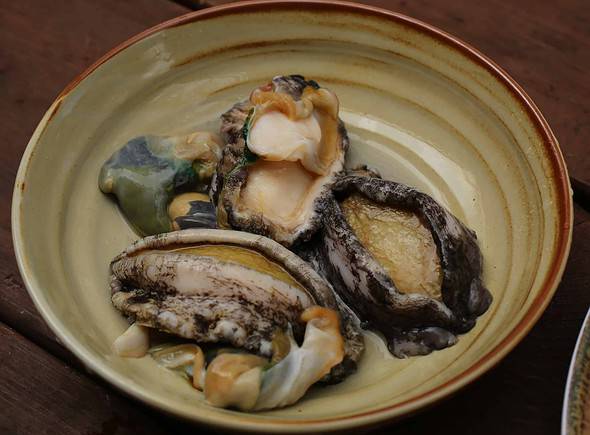
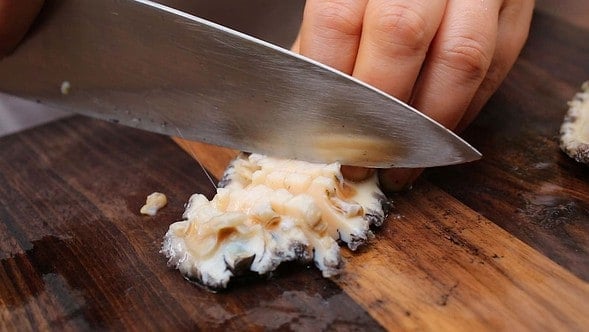
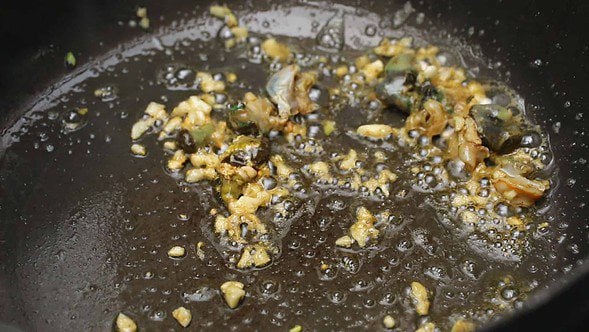
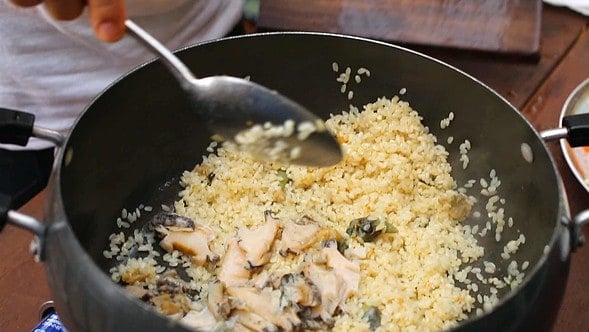
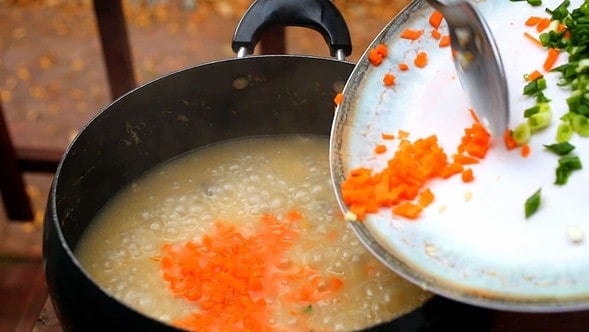









![[OTTOGI] Delicious COOKED RICE...](https://m.media-amazon.com/images/I/41zYdZ3EWJL._SL160_.jpg)























